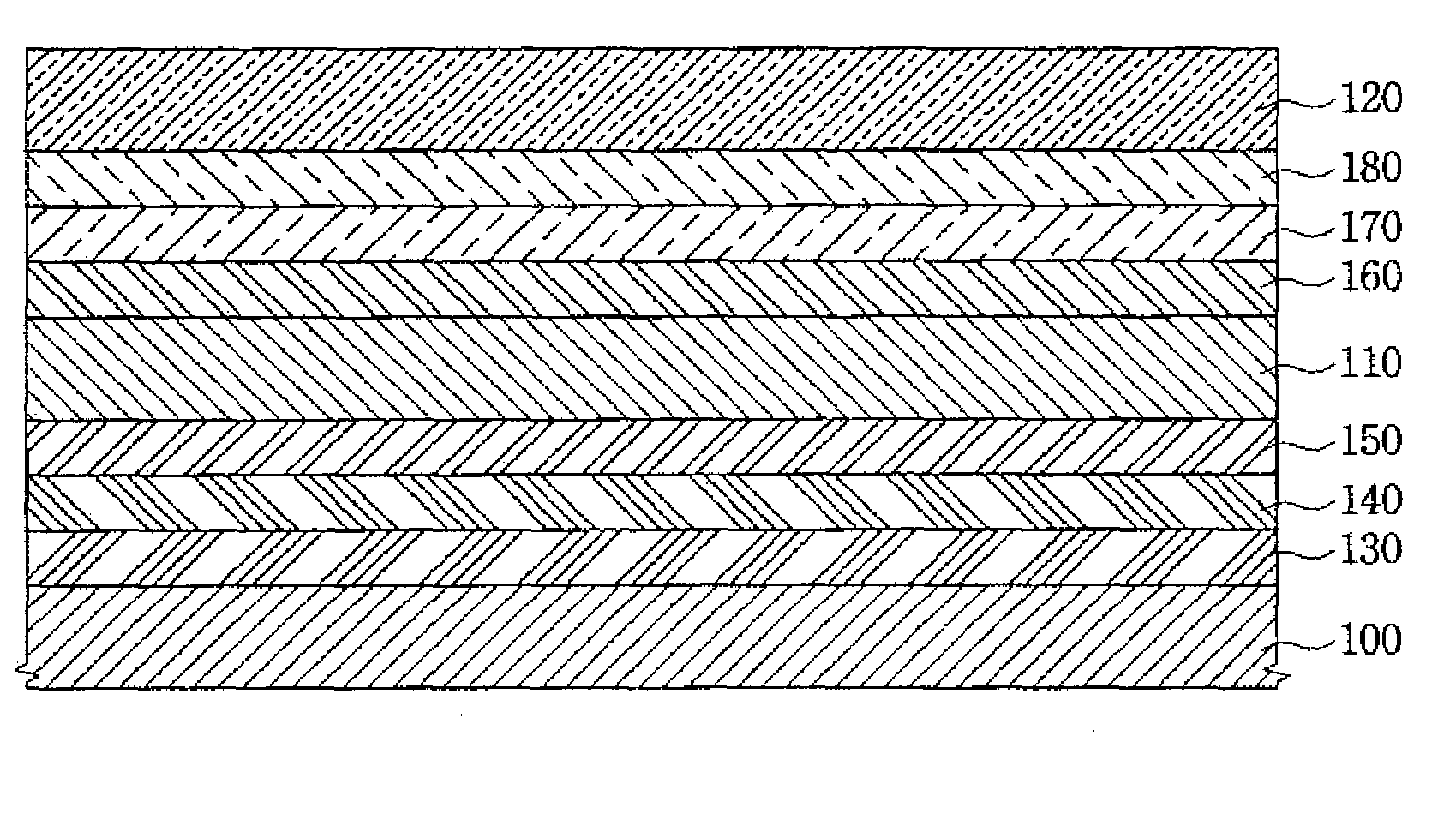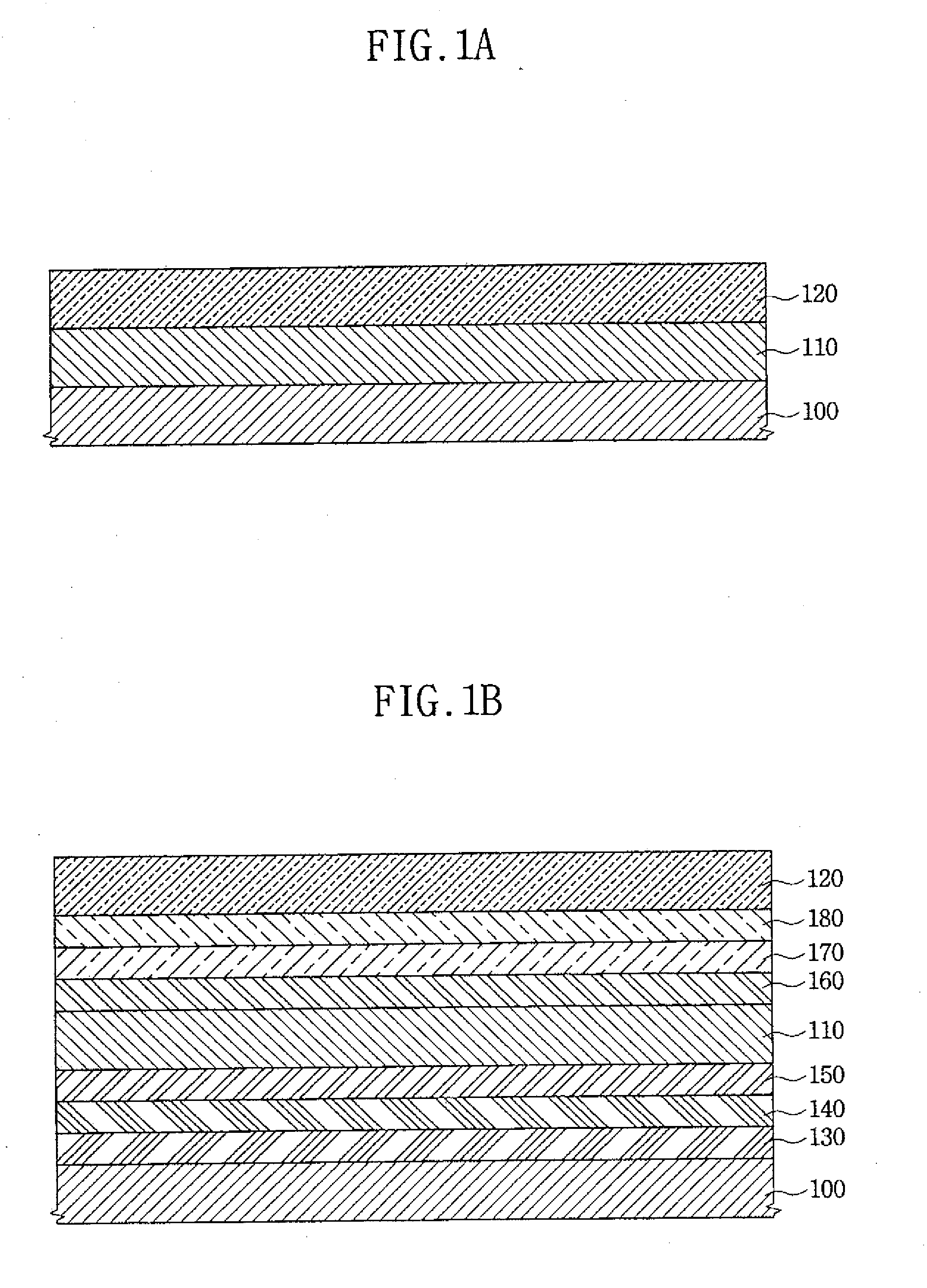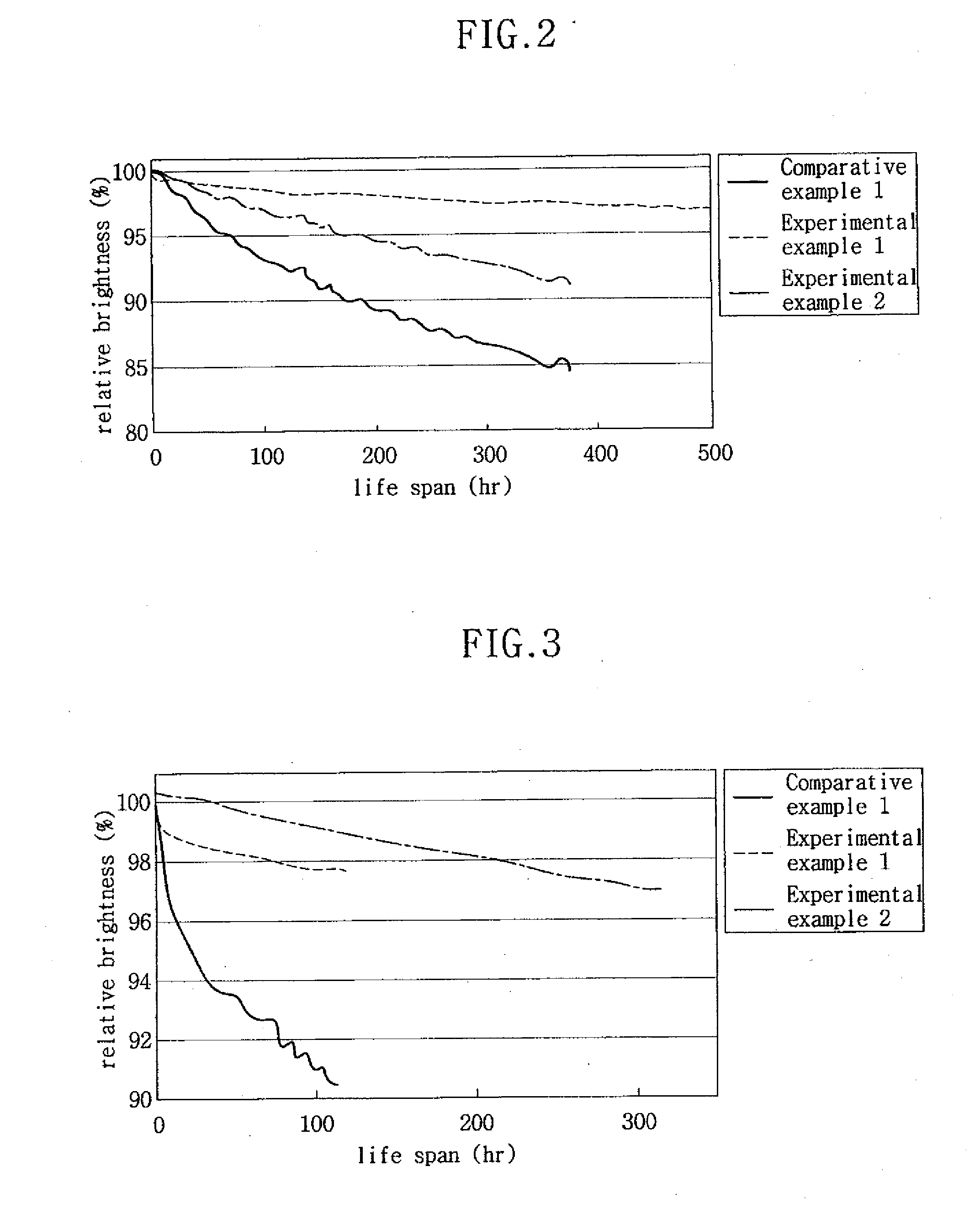Organic light emitting diode and method of fabricating the same
a light-emitting diode and organic technology, applied in the field of organic light-emitting diodes, can solve the problems of difficult limit of selection of auxiliary dopants, etc., and achieve the effect of improving the life of the device and facilitating the control of color coordinates
- Summary
- Abstract
- Description
- Claims
- Application Information
AI Technical Summary
Benefits of technology
Problems solved by technology
Method used
Image
Examples
experimental example 1
[0035]A first electrode was formed to a thickness of 1000 Å using indium tin oxide (ITO). Subsequently, a hole transport layer was formed to a thickness of 1000 Å using NPB on the first electrode. A red emission layer including rubrene as a host, 0.3 wt % RD3
(Kodak) as an emitting dopant, and 0.3 wt % as an auxiliary dopant was formed on the hole transport layer. The emission layer was formed to a thickness of 400 Å. An electron transport layer was formed to a thickness of 250 Å using TYE 704 (Toyo Ink Mfg. Co. Ltd., Tokyo, Japan) on the emission layer. An electron injection layer was formed to a thickness of 50 Å using LiF on the electron transport layer. A second electrode was formed to a thickness of 1500 Å using Al on the electron injection layer.
experimental example 2
[0036]The process described above for Experimental Example 1 was carried out
except that was included in the emission layer as an auxiliary dopant.
experimental example 3
[0041]A first electrode was formed to a thickness of 1000 Å using ITO. Subsequently, a hole transport layer was formed to a thickness of 1000 Å using NPB on the first electrode. A red emission layer was formed by stacking a 400 Å-thick first layer including rubrene as a host and 0.3 wt % RD3 (Kodak) as an emitting dopant on the hole transport layer, and a 150 Å-thick second layer including the host, the emitting dopant and
0.3 wt % as an auxiliary dopant on the first layer. An electron transport layer was formed to a thickness of 250 Å using TYE 704 (Toyo Ink) on the emission layer. An electron injection layer was formed to a thickness of 50 Å using LiF on the electron transport layer. A second electrode was formed to a thickness of 1500 Å using Al on the electron injection layer.
PUM
 Login to View More
Login to View More Abstract
Description
Claims
Application Information
 Login to View More
Login to View More - R&D
- Intellectual Property
- Life Sciences
- Materials
- Tech Scout
- Unparalleled Data Quality
- Higher Quality Content
- 60% Fewer Hallucinations
Browse by: Latest US Patents, China's latest patents, Technical Efficacy Thesaurus, Application Domain, Technology Topic, Popular Technical Reports.
© 2025 PatSnap. All rights reserved.Legal|Privacy policy|Modern Slavery Act Transparency Statement|Sitemap|About US| Contact US: help@patsnap.com



